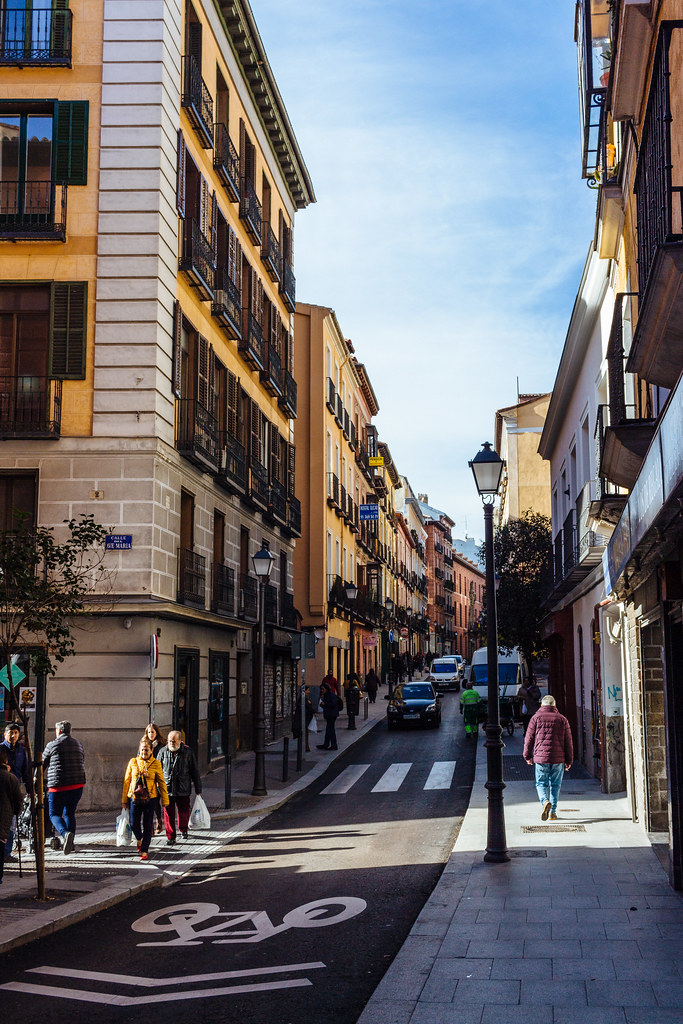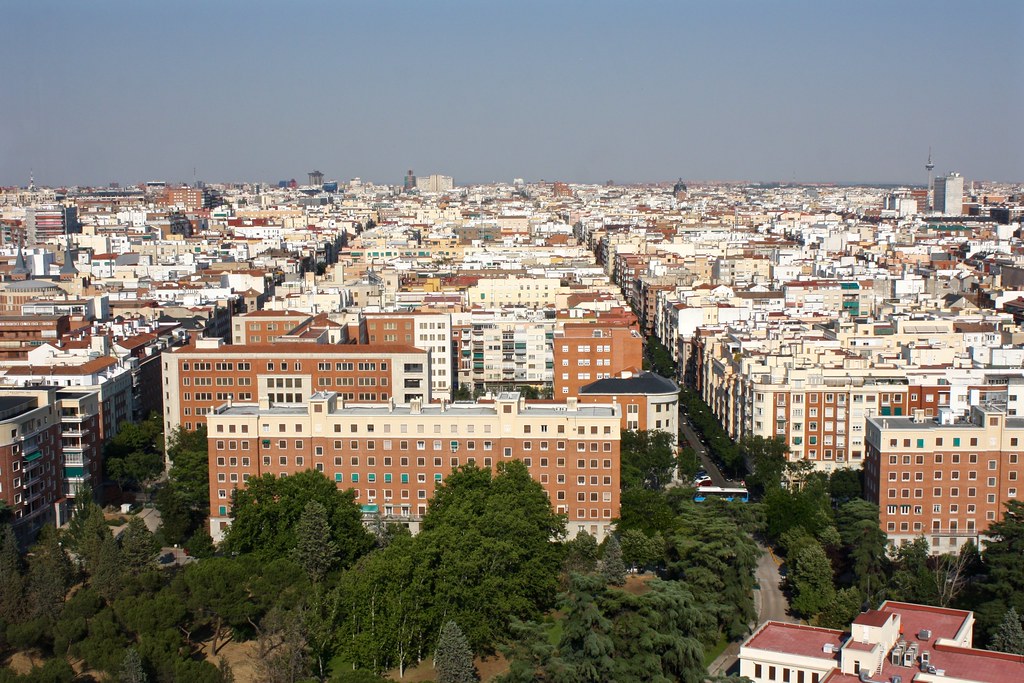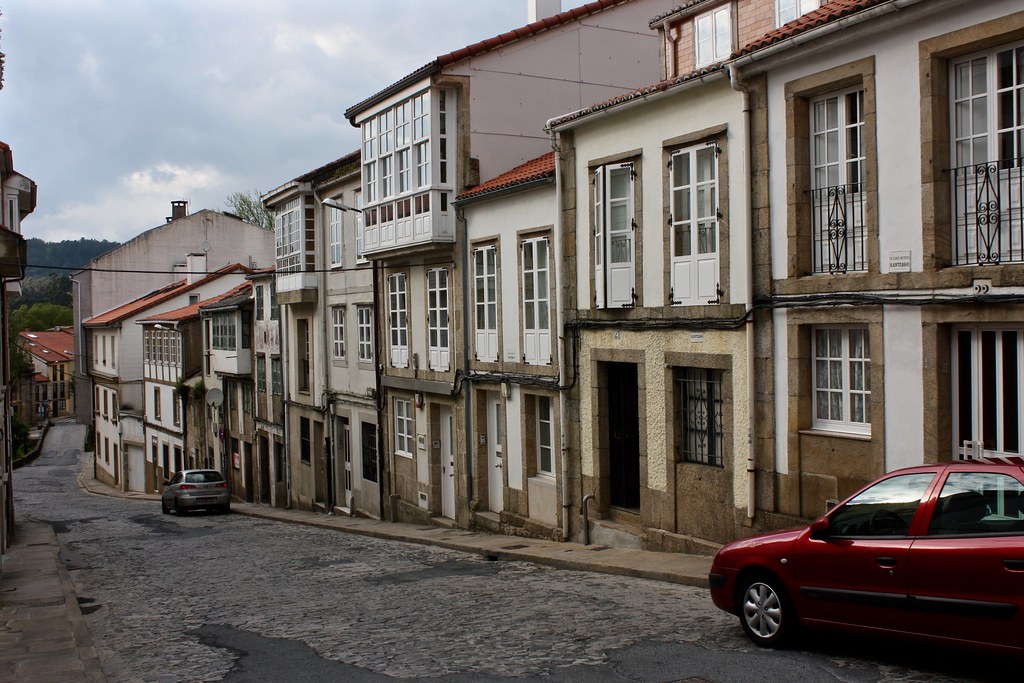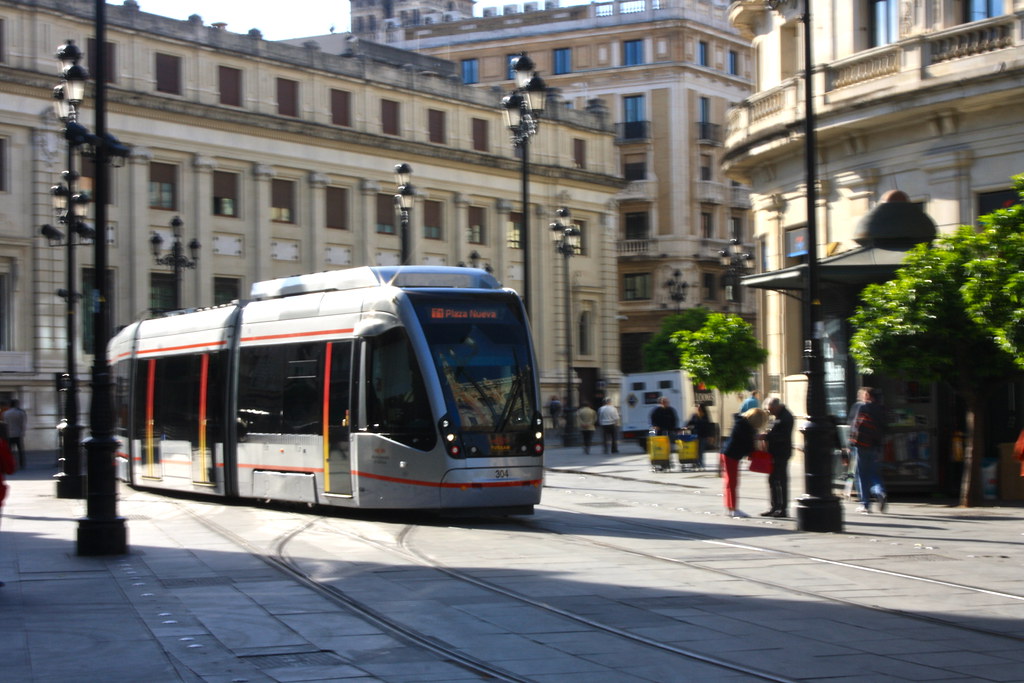5 Reasons Why You Don’t Need a Car to Survive in Spain
When I moved back home to Texas in 2015 after having spent three years living and working in Spain, the reverse culture shock I experienced was sharp—and it was mainly because I didn’t own a car.
To get to work, I had to walk half an hour to the closest bus stop and hope that I didn’t miss a bus that only came by once every 30 minutes. Walking through sprawling neighborhoods of single-story homes to ride a bus to get to an office park on the other side of town felt so inefficient to me having just left Spain, where most people live in mid-rise apartments or condos above ground-level shops, restaurants, and offices.
Getting groceries, going to the doctor, and grabbing something to eat or some coffee all meant I had to either hop in my parents’ car or face up to an hourlong walk—one way—from my parents’ house in the suburbs just to run a simple errand.
It was frustrating to return to the U.S. and feel such a lack of agency after spending my first three years out of college in Spain, where I didn’t need a car to survive.
 |
| Skyline of central Madrid, Spain |
That first summer I spent back home, I of course missed the friends I made in Spain, speaking Spanish (and/or Galician) on a daily basis, enjoying cheap, from-scratch Spanish food and wine, encountering history and architecture at every turn, and being able to travel around Europe and the Mediterranean with ease.
But I soon realized that what I missed more than anything else were the walkable neighborhoods I had grown accustomed to that didn’t force me to own a car to get to work, run errands, or socialize.
Why I missed living without a car
Owning a car in Spain was never really an option living on an auxiliar de conversación’s 700€ ($800) a month stipend and the occasional 10€/hour ($11.50) private English class. But I saved so much going car free in Spain, and I didn’t go into any further debt as I was being hit with my student loan repayments. The car I own today requires me to spend $400 a month between insurance, gas, maintenance, and savings equivalent to my car payment before I paid it off.
By relying on public transit or my own two feet in Spain, I stayed active and fit. Those free tapas that come with your beer at the bar do, in fact, come with a cost, so I burned calories by walking to get groceries, walking to see friends, or walking to explore town. I never had to stress over rush-hour traffic, finding parking, or remembering cash for tolls, and daily walks helped me to cope with the anxieties of living in a foreign country while dealing with multiple quarter-life identity crises.
I also kept my carbon footprint at a minimum. Even as the climate crisis intensifies, I sometimes feel like in the U.S., I have no choice but to continue emitting carbon dioxide from my car just to earn a paycheck, pick up food, go to medical appointments, etc. But in Spain, I reveled in a lower-impact lifestyle of walking, riding public transit, and taking electrified trains across the country for weekend trips.
My car-dependent disclaimer
In the three years I lived in Spain, I lived in larger cities—Úbeda and Santiago de Compostela, which had more amenities and better travel connections—and commuted by car with my teacher coworkers three days a week to elementary schools in rural villages. Carpooling just ended up being the most efficient way for me to get from a city with more housing options to the place where my job assignment was, all while fitting my 12 hours of classes into three days.
But I was also able to take affordable intercity buses into town that ran every hour or so. Keeping my transit card topped up gave me the flexibility to head home early on Tuesdays instead of being stuck at school for evening meetings I wasn’t required to attend. It also allowed me to still get to work if my coworkers were sick and unable to drive that morning.
Nevertheless, as I learned from my experience, I think living abroad—or even just traveling abroad—is so important because it shows us that another way of living is possible.
So, then, how can you live in Spain without a car?
 |
| Bollards on a sidewalk in Madrid, Spain |
1) Cities are walkable
This entire blog post could be probably summed up in those three words. It sounds like such a simple statement, but it’s a radically different approach than the one cities in the U.S. have taken for the past 70 years.
In America, municipal zoning codes often say that some parts of a city should be dedicated for offices and medical facilities, others for shopping and restaurants, still others for industrial usage, while entire swaths of the city are set aside from all these points of interest for housing—and only housing. Often these houses are single-family detached homes set back from the street by large yards. Typically, just one to four people might live on a single lot.
Zoning requirements like this mean that in the vast majority of American cities today, you’re required by law to exert time and energy to travel away from these spread-out residential neighborhoods to another part of town to get groceries and yet another sector of town for your job.
 |
| One-lane street in central Madrid, Spain |
Yet in Spain, it’s totally normal to live on the second, third, or fourth floor of a mid-rise apartment complex where you can run down the stairs to the ground floor and find a supermarket, a convenience store, a laundromat, a coffee shop, a bar or restaurant, a bakery, a boutique store, a multi-national clothing chain, a pharmacy, a cell phone service provider, a dentist’s office, a language school…I could go on.
When a neighborhood has multiple uses like this, the people who live there don’t have to leave their neighborhood in a car just to pick up a loaf of bread, grab coffee with some friends, or run an errand. They can just walk out the front door to get where they need to go.
2) Cities are dense
We have a vicious cycle of car dependency in the U.S.
Everything is so spread out in most American cities, so we need a car to get around. (Why waste an hour walking to something that’s three miles away when you could just hop in a car and get there in 10 minutes?) But because we need cars to get around, we have to build parking lots and garages to store our cars in, which forces everything to be spread out even further.
Plus, on the vast majority of the land of cities today, it is illegal to build anything other than a single-family house where one to four people can live—that means no duplexes, no granny flats, no apartments—which pushes the urban footprint farther out, making us rely on our cars even more.
This kind of low-density development not only makes it exhausting and time-consuming to walk or bike, it also makes public transit more expensive to support over longer distances.
 |
| The Chamberí neighborhood of Madrid, Spain |
Meanwhile, in Spain, mixed-use, mid-rise apartment complexes or condos have been the norm for many new developments built from the ’60s and ’70s onward.
Even in older parts of small towns, single-family homes will often have a space for a shop, an office, or a bar/café on the ground floor with one or more residences on the floor(s) above. And in contrast to American construction, those houses are typically casas adosadas, meaning their walls are touching and thus use far less land on yards.
 |
| A residential street in Santiago de Compostela, Spain |
This is how you end up with places like Barcelona (pop. 1,600,000) that can fit entirely within the city limits of the car-dependent Texan suburb I grew up in, Plano (pop. 290,000):

|
| Side-by-side comparison from the Mapmerizer |
When cities are dense, so many things are possible.
First of all, you can walk to your destination that’s only half a mile away rather than being forced to get in your car to drive somewhere miles away. Neighborhoods with lots of people can support services like supermarkets, tailors, etc. Finally, local transit becomes financially feasible: more potential riders (vs. fewer in low density cities) that you can carry over shorter distances (vs. being forced to build expensive infrastructure like tunnels and electrified rails over massive distances).
3) Streets are welcoming to pedestrians
You’re more likely to walk when you feel safe walking. Here’s a taste of what has made me feel safe walking in Spain, but what is not at all the norm in the U.S.:
Sidewalks. They exist! They’re usually wider than two people. And they’re most often set apart from traffic lanes by protective bollards that not only protect pedestrians from minor crashes but also prevent motorists from parking on the sidewalk.
It gets hot in Spain. Really hot. But there are many ways for pedestrians in Spain to take refuge from the heat and protect their skin. Trees provide much-needed shade while adding charm to city streets, while soportales (covered arcades or colonnades) and balconies create shade structures that also keep you dry in the rain. And because so many buildings reach higher than just a single story, they end up casting shade just by virtue of existing.
 |
| Trees, balconies, and tall buildings providing shade in Madrid, Spain |
Crosswalks with their own protected turn in traffic dot every intersection and more, and most drivers stop instantly if you even think about setting your foot into the street.
Finally, you can often find pedestrian boulevards, or streets where all cars are prohibited, frequently in historic city centers.
4) Governments fund public transit
Compare Bilbao, the major city of northern Spain, with its underground metro, to the subdivisions, freeways, and seas of parking lots of suburban Arlington, Texas, home to stadiums for the Dallas Cowboys football team and the Texas Rangers baseball team, the original Six Flags theme park, and the dubious distinction of being the largest city in America with zero public transit at all:

|
| Side-by-side comparison from the Mapmerizer |
Both cities have roughly the same population (Bilbao: 345,000, Arlington: 395,000), but only Bilbao has a three-line metro, a tram, a four-line commuter rail system, local buses, and regional buses. Car ownership is essentially a requirement to live in Arlington, whereas you could likely go your whole life without ever needing to use a car in Bilbao except for the odd taxi ride.
Here’s an overview of the kinds of public transit I used while living and traveling across Spain:
- Buses: These are the bread and butter of public transit. I would take frequent local buses to get from central Santiago de Compostela up the hill to the big shopping center or from the train station in A Coruña to the outskirts where the IKEA was. Less-frequent commuter buses gave me the freedom to access cool destinations like El Escorial from Madrid or the Roman ruins of Itálica from Sevilla. Airport express buses made navigating new transit systems a breeze when traveling. And more than anything else, regional buses were the key to unlocking so many interesting cities and villages for me when I lived in Úbeda sans train station—and they gave me another option for commuting from Santiago to the small town where I worked.
- Trams: Call them streetcars, call them trolleys, or call them light rail, these vehicles can carry more passengers along easy-to-understand fixed routes throughout a city. Complicated bus routes can be overwhelming sometimes, so I always appreciated the clarity of rails on the street and physical stations.
 |
| MetroCentro in Sevilla, Spain |
- Metro: Heavy rail carries thousands of passengers at high speeds along dedicated rights-of-way, whether underground or elevated, making many stops within a single city, often barely a quarter mile apart.
- Commuter rail: These full-size trains often run parallel to metro trains from city centers out to the suburbs, but they only make one or two stops per city, allowing them to cover longer distances in shorter times. But as long as these trains run throughout the work day in both directions, you can also think of them as regional rail networks.
5) It’s feasible to ride a bike
Here in Phoenix, I would feel completely unsafe riding a bike, even on short trips across my neighborhood. Sure, the metro area is wonderfully flat and easy to navigate, but city streets are given over almost entirely to drivers, who travel at highway speeds while checking their phones. You’re lucky to find a small strip of asphalt on the side of the road. Our local bikeshare program folded during the pandemic, and someone managed to crash their car into downtown Phoenix’s first protected bike lane just a week after it opened.
 |
| Bikeshare rack in Zaragoza, Spain |
In Spain, it’s common to find infrastructure that makes it easy and safe to ride a bike. Major cities (that also happen to be flat) like Sevilla and Zaragoza have put up the funds to protect bicyclists from drivers by carving out bike routes across the city. They’ve also set up bikeshare programs where you can borrow a bike and ride between bike racks.
